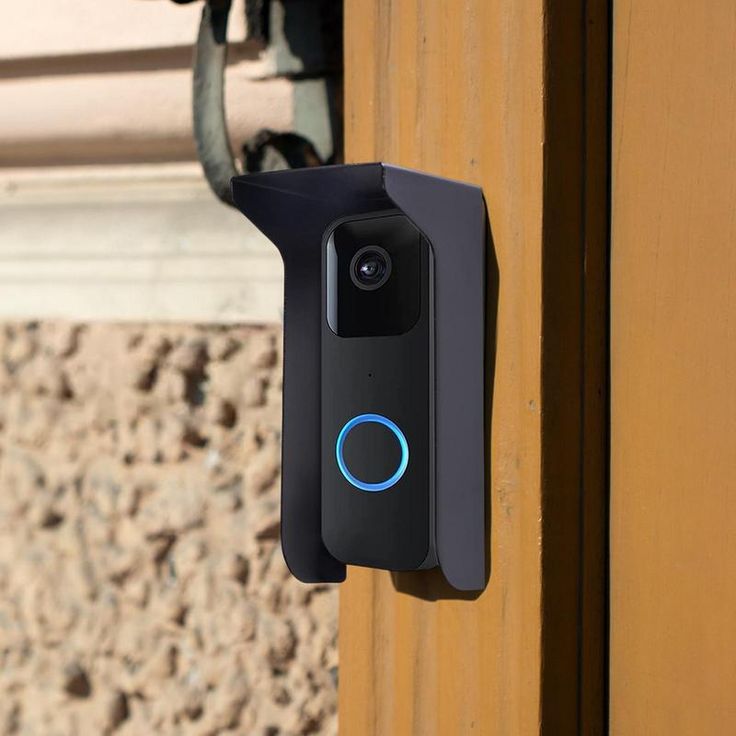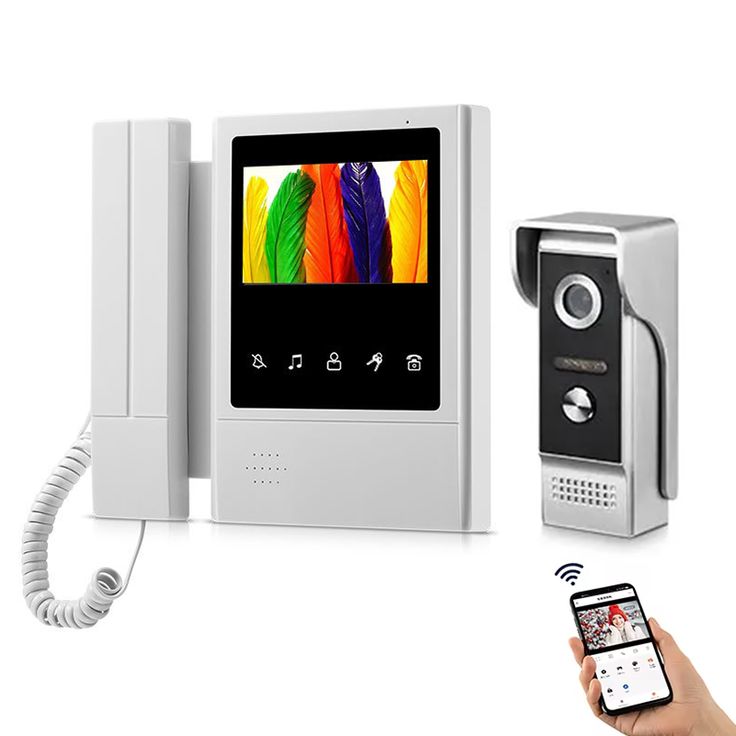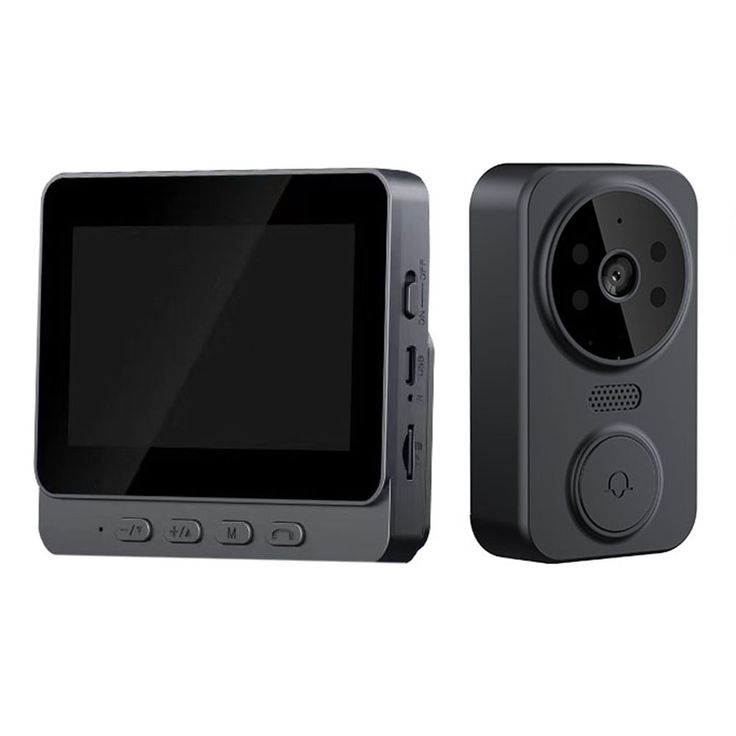Essential Tools and Materials Needed for Installation
How to install video doorbell? Before you begin the installation of your video doorbell, gathering the right tools and materials is crucial. Here’s a checklist to ensure you have everything necessary:
- Screwdriver: Most video doorbell kits come with a screwdriver. Have a Phillips-head screwdriver ready as well.
- Drill: If mounting the doorbell on brick, stucco, or concrete, a drill is required.
- Drill Bits: Usually, a 1/4″ masonry bit is needed for harder surfaces.
- Level: A level helps ensure the doorbell is installed straight. Some kits include a mini-level.
- Mounting Hardware: This includes screws and wall anchors. These are typically supplied in the video doorbell kit. Use anchors for hard surfaces.
- Wire Extenders and Wire Nuts: For wired installations, these help you achieve proper connectivity.
- Voltage Tester (for wired installations): Essential to ensure power is off before starting work.
- Jumper Cable (often provided in kits for wired models): Helps bypass the existing chime.
- Smartphone: Necessary for setting up device functions and connectivity.
Collect all these items before starting the installation to make the process smooth and efficient.

Preparing for Video Doorbell Installation
Before setting up your video doorbell, you must prepare properly. This ensures a safe and effective installation. Here’s what to do:
- Check the Power Supply: If you’re installing a wired video doorbell, turn off power at the breaker box. This prevents electrical hazards.
- Choose the Installation Spot: Select an optimal location. Good spots are near the front door, about four feet off the ground. This height offers the best view.
- Confirm Wi-Fi Signal: Ensure your Wi-Fi signal is strong at the installation spot. Weak signals can affect doorbell functionality. If needed, consider a Wi-Fi extender.
- Gather Your Tools: Refer to the tools and materials list provided in the previous section. Make sure all required items are at hand before you begin.
- Read Installation Instructions: Go through your video doorbell’s manual. Understand all the steps to avoid any installation errors. Familiarize yourself with any device-specific requirements.
By following these preparation steps, you’ll set yourself up for a smooth installation process.
Step-by-Step Guide to Installing Your Video Doorbell
Installing a video doorbell can be straightforward if you follow these steps. Let’s break it down:
- Charge Your Video Doorbell Battery. If it’s a wireless model, use the provided USB cable to charge. When the indicator shows fully charged, you’re ready to proceed.
- Set Up Your Device with the App. Before attaching your doorbell physically, connect it to your home’s Wi-Fi through the app. Follow on-screen instructions for this setup.
- Turn Off Power (for wired doorbells). Safety first! Cut power to your current doorbell at your breaker box to prevent electric shock.
- Remove Your Existing Doorbell (if applicable). With the power off, unscrew and disconnect your old doorbell. Be gentle with the wires.
- Mount the Doorbell Bracket. Use the level to ensure it’s straight and mark the position for screws. Drill holes if required, then fasten the bracket with screws.
- Connect the Wires (for wired doorbells). Attach the doorbell wires to the back of the new device. If needed, use the wire extenders provided in your kit.
- Attach the Video Doorbell. Click the charged doorbell into the bracket. Make sure it’s secure.
- Restore Power (for wired doorbells). Flip the breaker back on. Check your doorbell’s power light or use the app to confirm it’s working.
- Test the Doorbell. Push the button to ensure it operates correctly. The app should show video feed and allow you to communicate.
By following these steps, your video doorbell should be up and ready. It can give you peace of mind with additional security and convenience.

Choosing Between Wired and Wireless Video Doorbells
When selecting a video doorbell, you’ll choose between a wired and a wireless one. This decision impacts installation and use. Let’s compare them quickly.
Wired Video Doorbells often promise more features. They connect to your home’s electrical system. This setup means no battery changes. Also, you might get better video and more recording options. But installation can be tricky. You may need an electrician if new wiring is a must.
Wireless Video Doorbells offer simplicity and flexibility. They run on batteries. You can place them almost anywhere on your property. They’re easier to install too. This makes them great for renters or if you prefer a do-it-yourself project. But remember, batteries need regular checks and changes.
Here’s what to think about when choosing:
- Power Supply: Wired models don’t need battery changes. Wireless ones do.
- Installation Flexibility: Wireless gives more options for placement. Wired may require existing wiring or more work.
- Feature Set: Wired may offer more like constant recording. Wireless might have fewer features but still cover the basics well.
In the end, think about your needs and home setup. Factor in how often you can check on batteries versus using existing wiring. Make sure your Wi-Fi signal reaches where you plan to install. Decide which type fits your lifestyle and gives the security you want.
Tips for Connecting Your Video Doorbell to Wi-Fi
Connecting your video doorbell to Wi-Fi is a key step in installation. Here are some tips to ensure a smooth process:
- Close Proximity to Router: Start by placing your video doorbell near your router. This guarantees a strong Wi-Fi signal during the setup.
- Check Signal Strength: Use your smartphone to check the Wi-Fi signal strength where the doorbell will be mounted. If the signal is weak, you may need a Wi-Fi extender.
- Follow App Instructions: Download the doorbell’s app on your smartphone. Use it to guide you through the Wi-Fi connection process.
- Secure Wi-Fi Network: Ensure that your home Wi-Fi network is secure. A protected network prevents unauthorized access to your doorbell’s video feed.
- Test Before Installing: After connecting to Wi-Fi, test your video doorbell’s functionality. Make sure you can see the live video feed and get alerts.
- Consider a Chime Pro: If you experience connection issues, a device like the Ring Chime Pro can help. It boosts Wi-Fi signals and acts as an extra chime.
- Update Software: Keep your doorbell’s firmware and software updated. Manufacturers release updates that can improve connectivity and performance.
By following these tips, you’ll enhance your video doorbell’s Wi-Fi connection. A stable connection is essential for your doorbell to work properly.

Safety Precautions to Consider During Installation
When installing your video doorbell, your safety is paramount. Here are key precautions to keep in mind:
- Turn Off Power: Always cut the power at the breaker box before starting. This prevents electric shocks.
- Check Local Laws: Some areas may need a qualified electrician for the job. Be aware of your local regulations.
- Use Correct Tools: Install your doorbell with the tools provided in the kit or those specified.
- Handle Wires with Care: Be gentle with existing wiring to avoid damage and ensure a safe setup.
- Don’t Over Tighten Screws: Over tightening can damage the device. Screw just until it’s secure.
- Avoid Water Exposure: Ensure all electrical components remain dry during installation to prevent damage.
- Test Grounding: Use a voltage tester to check that the power is indeed off before touching wires.
- Secure Ladder: If using a ladder, make sure it’s stable and secure to prevent falls.
By following these safety steps, you can install your video doorbell safely and effectively.
Advanced Settings and Features to Optimize After Installation
Once you’ve installed your video doorbell, optimizing its settings enhances security and user experience. Here’s how to do it:
- Adjust Motion Settings: Fine-tune motion sensitivity to prevent false alerts. Select motion zones that matter most.
- Set Up Activity Zones: Define specific areas for your doorbell to monitor. This narrows down alerts to key areas.
- Test Video Quality: Ensure you’re getting clear images. Adjust resolution and angles if needed for the best view.
- Enable Night Vision: See in the dark. Turn on night vision for clear footage any time of day.
- Configure Privacy Zones: Block out parts of the view you don’t wish to record. This protects neighbors’ privacy too.
- Connect with Other Smart Devices: Link your doorbell with smart locks or lights for extra security.
- Regular Firmware Updates: Keep your doorbell’s software up to date. Install updates as they come.
- Set Up Shared Users: Allow family members to access the doorbell’s feed. Maintain control by managing permissions.
- Explore Integration Options: Pair with voice assistants like Alexa for hands-free control.
By adjusting these advanced settings, ensure your video doorbell works best for your needs and that your home stays safer.

